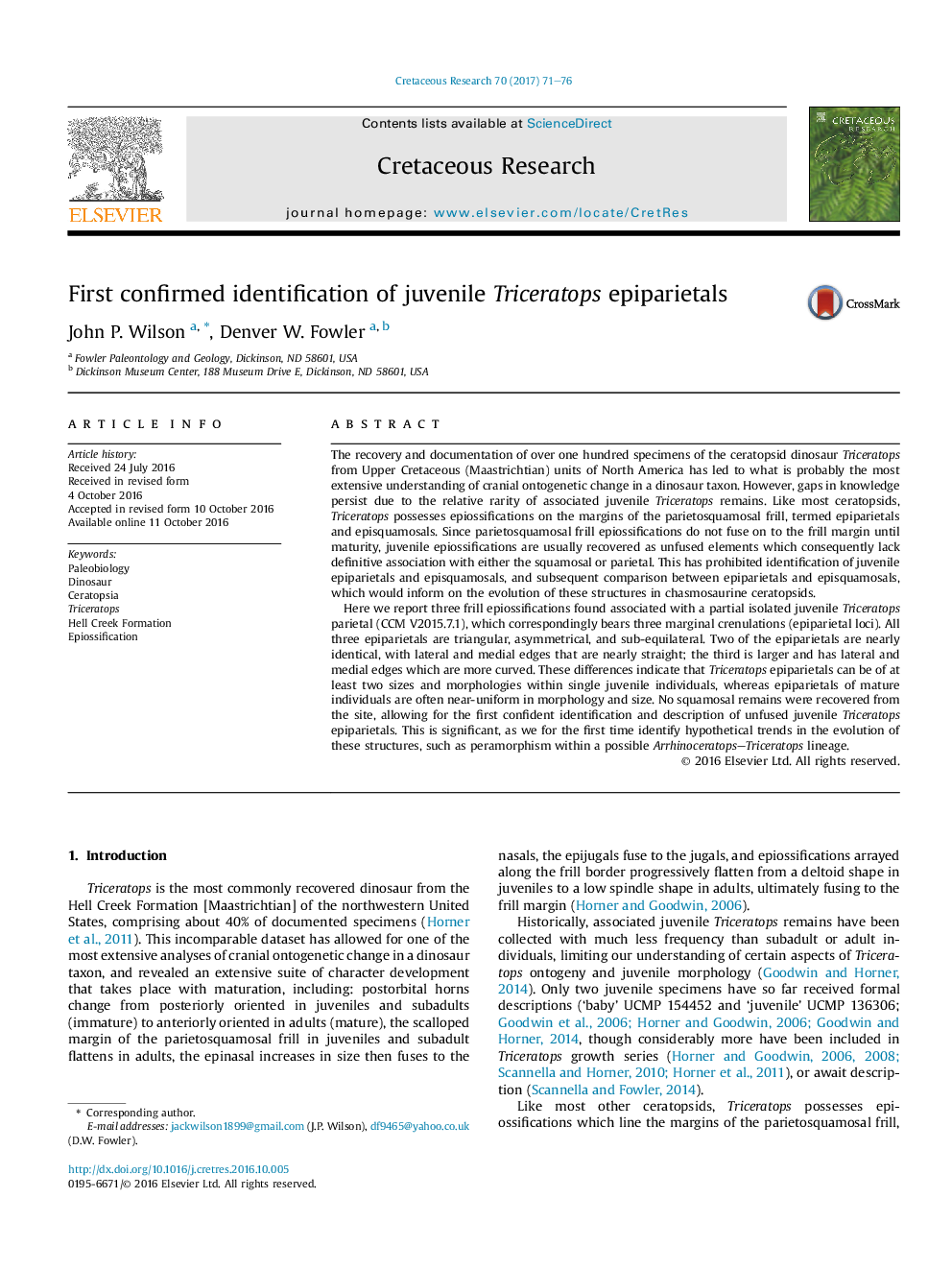| Article ID | Journal | Published Year | Pages | File Type |
|---|---|---|---|---|
| 4746622 | Cretaceous Research | 2017 | 6 Pages |
The recovery and documentation of over one hundred specimens of the ceratopsid dinosaur Triceratops from Upper Cretaceous (Maastrichtian) units of North America has led to what is probably the most extensive understanding of cranial ontogenetic change in a dinosaur taxon. However, gaps in knowledge persist due to the relative rarity of associated juvenile Triceratops remains. Like most ceratopsids, Triceratops possesses epiossifications on the margins of the parietosquamosal frill, termed epiparietals and episquamosals. Since parietosquamosal frill epiossifications do not fuse on to the frill margin until maturity, juvenile epiossifications are usually recovered as unfused elements which consequently lack definitive association with either the squamosal or parietal. This has prohibited identification of juvenile epiparietals and episquamosals, and subsequent comparison between epiparietals and episquamosals, which would inform on the evolution of these structures in chasmosaurine ceratopsids.Here we report three frill epiossifications found associated with a partial isolated juvenile Triceratops parietal (CCM V2015.7.1), which correspondingly bears three marginal crenulations (epiparietal loci). All three epiparietals are triangular, asymmetrical, and sub-equilateral. Two of the epiparietals are nearly identical, with lateral and medial edges that are nearly straight; the third is larger and has lateral and medial edges which are more curved. These differences indicate that Triceratops epiparietals can be of at least two sizes and morphologies within single juvenile individuals, whereas epiparietals of mature individuals are often near-uniform in morphology and size. No squamosal remains were recovered from the site, allowing for the first confident identification and description of unfused juvenile Triceratops epiparietals. This is significant, as we for the first time identify hypothetical trends in the evolution of these structures, such as peramorphism within a possible Arrhinoceratops–Triceratops lineage.
